Top 10 Forests and Jungles of Iran
Few things rival the soothing effect of a leisurely walk through the woods. From vast deserts to towering mountain ranges, Iran's topography is a canvas painted with the hues of varied ecosystems.
Green fields, adorned with an abundance of trees, provide a perfect setting to rekindle a connection with nature, offering a haven of peace and tranquility.
Take a deep breath of the crisp, dew-kissed air and let the natural orchestra of rustling branches, rocks, and leaves accompany your stroll—simple pleasures that bring joy to nature lovers.
If you're thinking of heading into the woods but aren't sure where to find the most beautiful spots, read our guide on the top 10 forests and jungles of Iran.
What are the Top 10 Forests and Jungles in Iran?
- Alimestan Forest
- Caspian (Hyrcanian) forest
- Naharkhoran Forest
- Arasbaran Region
- Savadkooh Forest
- Irano - Turanian Region
- Dalkhani Jungle
- Zagrosian Region
- Mangrove Forests of Qeshm
- The Persian Gulf and Oman Region
1. Alimestan Forest

The Mazandaran’s Alimestan Forest, located near Amol and about 20 kilometers from Haraz road, close to the village of Alimestan, is renowned as one of the captivating destinations in Mazandaran province. This lush forest is a vital part of the Hyrcanian forests, boasting an impressive age of over 50 million years.
The forest is situated at an elevated altitude of approximately 1500 meters above sea level. This high position leads to significantly cooler temperatures in the hot season. Plains, trees, and springs are nourished by rainwater during the spring and autumn. In winter, a layer of white snow blankets everything, transforming the landscape into a winter wonderland, but weather conditions in the cold season are too harsh for habitation.
Along the Alimestan forest, the temperature fluctuates, and the landscape varies dramatically. At some points, the weather is sunny and warm, while in others, it's cool and foggy. The landscape transitions from dense forest to open plains, and from there to pastures adorned with flowers. As you ascend, you'll encounter a diverse panorama, from hedges to pastures, and eventually, the breathtaking peak.
From the summit, the entire forest and the surrounding pastures sprawl beneath your feet, offering a panoramic view extending from the Damavand ridge to the Caspian Sea.
Within the village's green woodland, there exist two meteorite impact craters, each with a depth of 10 meters, which are called Naghsh-e Pay-e Rostam (Rostam’s Kneels Print). The local belief attributes the formation of these craters to the act of Shahnameh's hero, Rostam, kneeling to drink from a nearby spring. These craters were actually formed by the collision of two large meteorites.
| Suggestion: Opert Ridge - A Majestic Natural and Cultural Haven in Semnan, Iran
Unique Plant Species
Alimestan boasts a rich variety of flora, including the elusive Persian Ironwood (Parrotia persica), which its vibrant foliage paints the forest in autumnal hues. Rare orchids and endemic species add to the botanical allure, creating a haven for plant enthusiasts.
Notable Wildlife Inhabitants
The forest is home to an array of wildlife, from red deer and wild boars to foxes and Persian leopards. Birdwatchers will be delighted by the presence of golden eagles and Caspian turkeys, making Alimestan a haven for both plant and animal enthusiasts.
Hiking Trails
Alimestan offers a network of well-marked hiking trails, catering to varying levels of expertise. Whether it's a leisurely stroll through the woodland or a more challenging ascent to panoramic viewpoints, the forest provides a hiking experience suitable for every adventurer.
| Read about: Chalus Road - Iran's Most Beautiful Road
Bird-Watching Opportunities
With its diverse birdlife, Alimestan is a paradise for bird watchers. The rustling leaves and melodious bird calls create a harmonious backdrop for observing species like the colorful Bee-eater or the majestic Lammergeier.
Camping Facilities
For those seeking a deeper immersion into nature, camping facilities are available, allowing visitors to spend nights under a blanket of stars, surrounded by the soothing sounds of the forest.
Access to the forest Alimestan
To access Alimestan Forest, drive 20 km from Amol or 140 km from Tehran along the Haraz road. Turn right at the sign for Imamzadeh Ghasem, then take a left at the initial junction. Follow the winding asphalt side road for about 7 km, passing through Lahash village and continuing for an additional 5 km to reach Alimestan village. From there, the forest is visible ahead.
| Disocver: Why Explore Iran's Ecotourism Wonders?
2. Caspian (Hyrcanian) forest

Hyrcanian forest is the area with a unique richness of biological diversity, endemic and endangered species. The region covers an area of 55,000 Km2 (21,000 mi2) near the southern shores of the Caspian Sea of Iran and Azerbaijan.
In Iran, this ecoregion is alongside the Caspian Sea and the northern slopes of Alborz Mountains for about 800 km in length. Due to the high humid climate and suitable soil, it has a high production capacity. The forest is home to 296 bird species and 98 mammals. The main trees and shrub species in the region are:
- Fagus Orientalis
- Buxus Hyrcania
- Fagus Orientalis
- Buxus Hyrcania
- Carpinus betulus
- Parrotia Persica
- Quercus castaneifolia
- Pterocarya fraxinifolia
- Alnus subcordata
- Zelkova carpinifolia
- Alnus glutinosa
- Diospyros
- Fraxinus excelsior
- Carpinus Orientalis
- Tilia begonefolia
- Carpinus schuschaensis
| Read the full article: Caspian Hyrcanian Forests
3. Naharkhoran Forest

As one of the most popular forests in Iran, Naharkhoran is situated in the northeastern province of Golestan. Tucked away amidst the Alborz mountain range, this forest presents a unique blend of biodiversity and breathtaking landscapes. Rolling hills, lush valleys, and clear waterways create a tranquil setting for visitors seeking a retreat into nature.
Naharkhoran offers adventure enthusiasts a playground for activities like rock climbing and zip-lining. The rugged terrain provides a thrilling backdrop for those seeking an adrenaline rush amid nature's embrace.
| Read the full article: Naharkhoran Forest - A Travel Bucket List Must
Specific Plant and Animal Species
Naharkhoran is renowned for its rich biodiversity, housing a variety of flora and fauna. The forest is adorned with towering oak and beech trees, while rare orchids and wildflowers carpet the forest floor. Fauna includes Persian fallow deer, brown bears, and a vibrant array of bird species.
Local Cuisine
The Golestan region is renowned for its delectable cuisine, and Naharkhoran Forest provides a taste of these local delights. Traditional dishes such as Baghala Ghatogh (broad bean stew) and Mirza Ghasemi (smoked eggplant and tomato dip) offer a gastronomic journey into the heart of Golestan's culinary heritage.
| Read more: Persian Food - Taste the Best, Forget the Rest
How to Reach Naharkhoran Forest
Accessing Naharkhoran Forest involves a scenic journey through Golestan Province. The nearest city, Gorgan, serves as a starting point for the adventure. From Gorgan, well-connected roads wind through the picturesque countryside, leading visitors to the heart of Naharkhoran's natural splendor.
| Near Naharkhoran Forest: Alangdareh Park - A Natural Paradise in Gorgan, Iran
4. Arasbaran Region
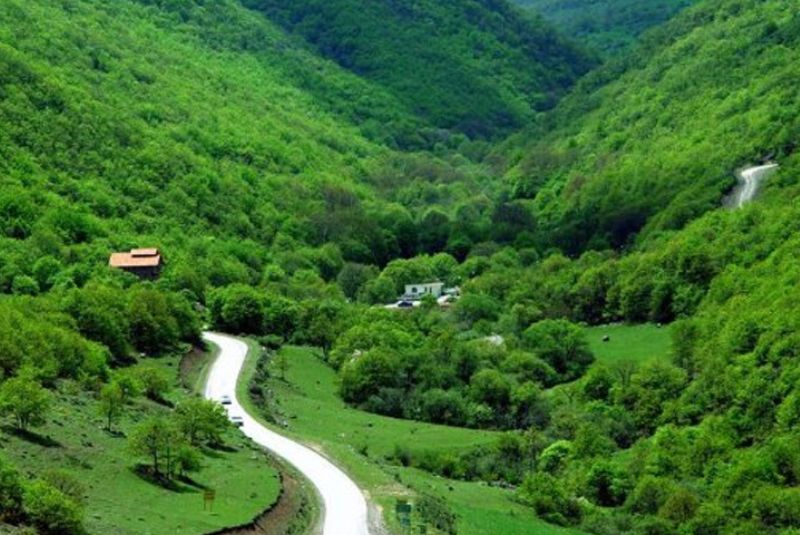
Arasbaran, also known as "Qaradagh" means “Black Mountain”. The region has a great potential for ecotourism because of its significant diversity of flora and fauna. The region is home to 215 species of birds, 29 species of reptiles, 48 species of mammals, and 17 species of fish.
The amazing characteristic of Arasbaran forests is the ubiquity of edible wild trees. As an example, a patch of forest between Aghaweye and Oskolou includes hazelnut trees. The region is situated in the north-west of Iran and East Azarbaijan province and has a cold and semi-humid climate. Main tree and shrub species in the area are:
- Quercus
Vornus - Carpinus betulus
- Populus
Fraxtinus excelsior- Corylus
- Ulmus
- Taxus
- Viburnum
| Read the full article: Arasbaran Forest - A Haven for Nature Lovers
5. Savadkooh Forest

The Sawadkouh forest in Mazandaran province, is commonly referred to as the Sangdeh forest due to its proximity to the Sengdeh village. Additionally, owing to the prevalence of beech trees, it is also known as the Savadkooh beech forest. On a related note, another segment of the Sangdeh beech forest is adjacent to a village named Mersi-si (The Place of beech trees). Therefore, if you come across the term "Mersi-si Forest" when referring to the Sawadkoh beech forest, don't be perplexed, as this alternative name is particularly used by the locals.
The significance of the Savadkouh beech forest extends beyond the presence of beech trees; it delves into the historical roots of the forest, with some trees in the area dating back millions of years. The beech trees in the Savadkoh beech forest, on average, are believed to be more than 40 million years old, harking back to the Jurassic period.
This forest also abounds with various shrubs, mushrooms, bushes, and an assortment of trees such as fir, maple, ulmus glabra, and alder.
As it is located at the high altitude, the forest experiences a cold and mountainous climate, making winter visits potentially challenging due to the chilly weather. Consequently, the best time to explore the Savadkooh beech forest is during the spring and summer months. During this period, the forest comes alive with lush greenery and a refreshing ambiance, providing nature enthusiasts with the opportunity to revel in the distinctive scenery.
Furthermore, as autumn sets in, the Savadkoh beech forest transforms into a mesmerizing display of vibrant autumnal hues, creating a picturesque spectacle that is truly enchanting.
| Also discover: The Most Famous Caves of Iran
6. Irano - Touranian Region
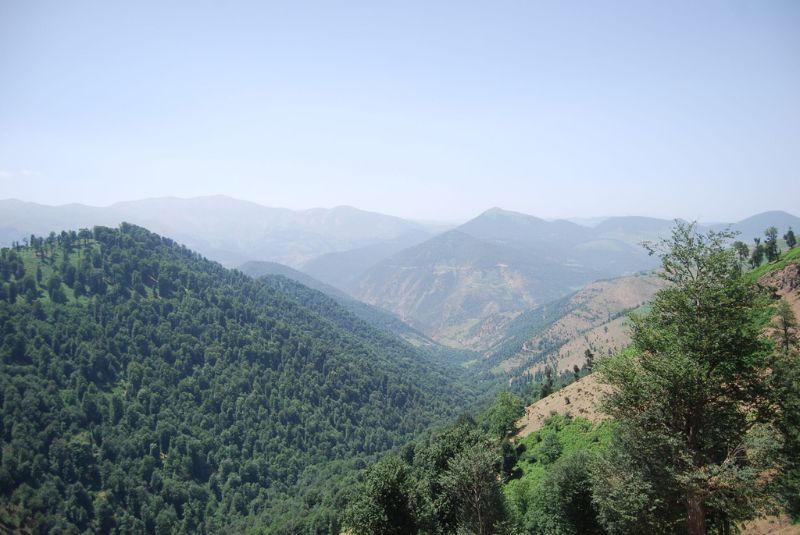
The region covers an area of about 3,452,775 hectares with a dry and mainly cold climate in winter. About 1,464,992 hectares of the region is preserved by UNESCO with the variety of habitats.
The region is situated in North Khorasan, Azerbaijan, Markazi and western Provinces of Iran. Regarding topographical conditions and diversity of species, the region is divided into plain and mountainous sub-regions. The main tree and shrub species in the region are:
- Tamarix
- Amygdalus
- Ulmus
- Pistacia
- Geltis
Grataegus - Salix
| Also might be interesting: Iran’s Top 10 Seas and Lakes to Explore
7. Dalkhani Jungle
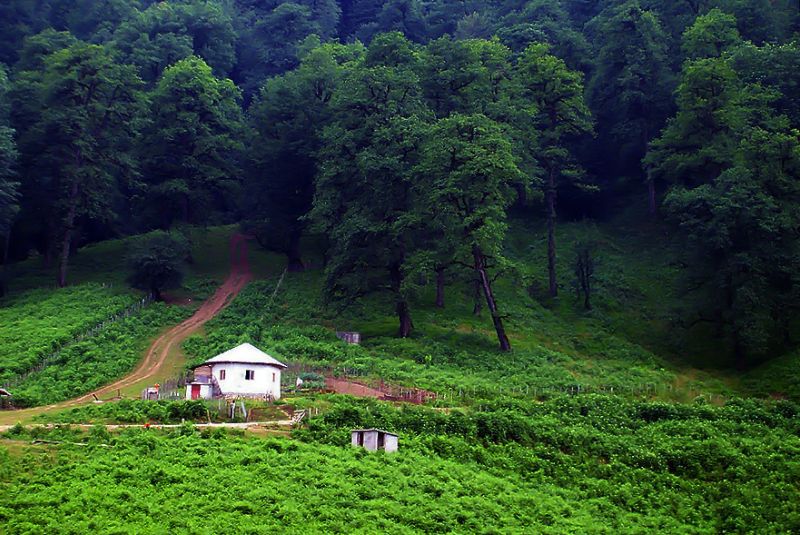
One of Iran's most captivating forests and jungles is the enchanting Dalkhani forest, situated 30 kilometers southeast of Ramsar, amidst the heights of the Alborz mountain range along the Jannet Rudbar road. This semi-mountainous forest, positioned at an elevation of 800 meters above sea level and spanning an expansive 600,000 square meters, stands out as a primary attraction in Ramsar city.
The Dalkhani Misty Forest beckons with a range of natural wonders, including waterfalls, rivers, lakes, and panoramic mountain views, all complemented by the mesmerizing sea of clouds, enhancing the overall experience. Locally known as Dalan-e Behesht (Heaven Corridors), this place earns its moniker as the verdant canopy of trees is enveloped by a layer of mist, creating a scenery reminiscent of a winding corridor.
As you journey towards the Dalkhani forest, you'll encounter cabins, eateries, roadside stalls, and resorts providing opportunities to rest, shake off travel fatigue, and rejuvenate before continuing your expedition. The route is dotted with local vendors offering regional products like milk, butter, honey, cheese, fish, and more.
The climate of the Dalkhani Ramsar forest is exceptionally pleasant, setting it apart from other northern cities. This forest boasts a more moderate humidity level, making it comfortable even during the warmer summer months. The forest provides favorable temperature conditions, making it an ideal place for accommodation and an extended stay. A distinctive allure of this forest is its misty weather. At times, the fog blends seamlessly with the lush greenery of the trees, offering tourists a truly unique and memorable atmospheric experience.
| Suggestion: Iran's Top 14 National Parks Every Tourist Should Visit
8. Zagrosian Region
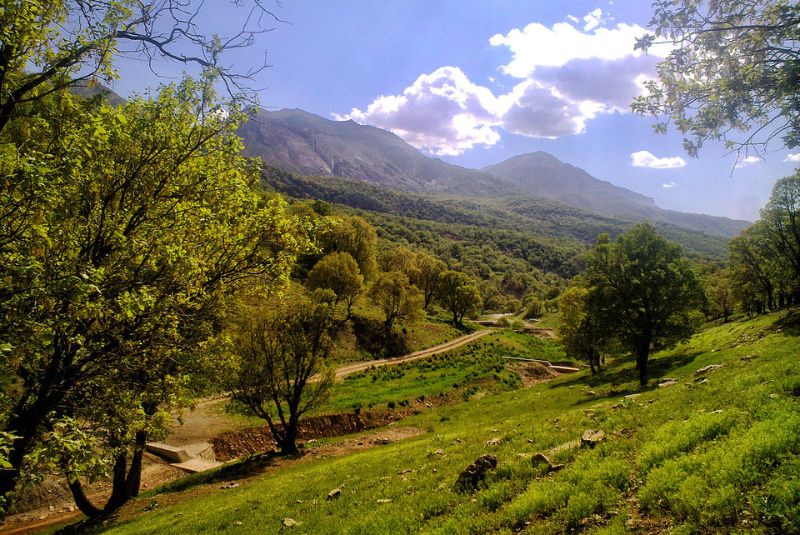
The region extends throughout the Zagros Mountain in the west and south of Iran, including West Azerbaijan, Kurdistan, Kermanshah, Lorestan, Fars, Charmahal & Bakhtiyari, and north of Khuzestan provinces.
The region has an area of 4,749,000 hectares with a semi-arid climate and temperate in winter. Some of the most important rivers in Iran such as Karun, Karkhe, and Zayandehroud are located in this area. The main tree and shrub species in the region are:
- Q.Persica
- Q.Branti
- Q.lnfectoria
- Q.Lusitanica
- Pistacia
- Amygdalus
- Celtis
- Crataegus
- Fraxinus excelsior
9. Mangrove Forests of Qeshm
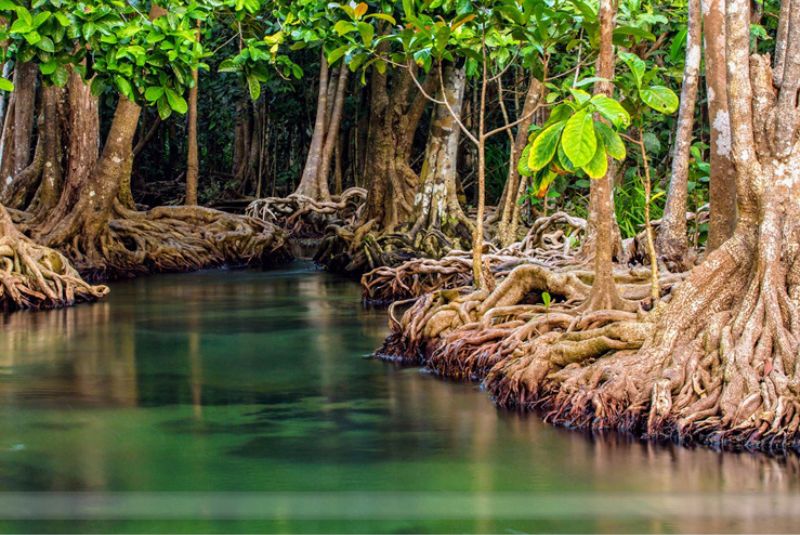
Situated between Hormozgan province and Qeshm Island, known as Tangeh Khoran Strait, the enigmatic Qeshm mangroves (Hara Forest) cover an expansive 82,360 hectares. The mangrove trees reach heights of 3 to 6 meters, thriving in the saline waters of coastal regions. During low tide, the trees emerge from the water, submerging themselves when the tide rises. Their roots become distinctly visible when the water level is at its nadir. Sporting vibrant green leaves, these mangroves flourish in brackish water, demonstrating resilience by not relying on freshwater sources.
The mangrove forests of Qeshm Island in the Persian Gulf are home to a rich tapestry of biodiversity, featuring prominent animal species such as the red-fiddler crab (Uca spp.) and Socotra cormorant (Phalacrocorax nigrogularis), alongside diverse plant species including the dominant grey mangrove (Avicennia marina) and the distinctive loop-root mangrove (Rhizophora mucronata). These ecosystems play a pivotal role in supporting marine life, acting as nurseries for fish and crustaceans, while their complex root systems provide vital coastal protection against erosion and storm surges.
Numerous migratory birds choose Qeshm as their wintering grounds, with over 100 species documented in the region. These avian inhabitants include cuckoos, egrets, and gray Salim, among others.

Best Time to Visit
Access to the mangroves is exclusively by water transport. Given the notably high temperatures in the southern regions of Iran, it is recommended to plan visits during the milder seasons of winter, late autumn, or early spring. These periods offer the most favorable weather conditions for exploration.
Tidal variations in the mangrove forest occur approximately every six hours, and navigating through the mangroves during these tidal shifts carries the risk of potential obstruction.
However, skilled canoe operators possess the necessary expertise to anticipate and navigate these tidal patterns effectively, ensuring a secure and enjoyable exploration experience.
10. The Persian Gulf and Oman Region
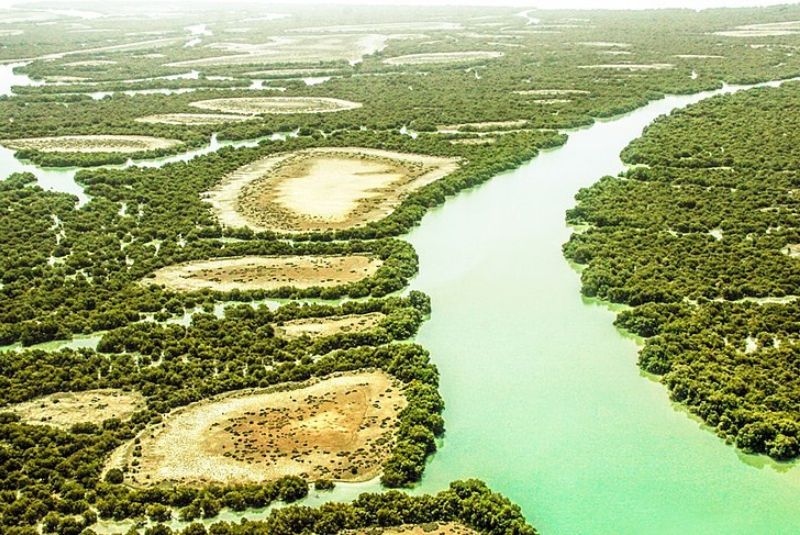
The region has an area of 2,130,000 hectares throughout the southern part of the country in Khuzestan,
- Acacia
Prosopia - Ziziphus
- Avicennia
- Rhizophora
- Populus
euphatica - Prosois
stephaniana
| Related: Persian Gulf Islands - A Traveler's Guide to Iran's Coastal
Final Takeaway
The natural beauty of Iran is waiting for you to discover. However, as you go out exploring, it's crucial to keep in mind the responsibility that comes with it. We urge our readers to take on these adventures with a dedication to travel that's both sustainable and responsible.
Set out on these adventures not just as someone passing through but as guardians of the environment. Engage with the local cultures, soak in the beauty of nature, and let the tales of the top 10 forests and jungles of Iran weave into your own story.
Share your story!
Comment below and let us know about your Experience.
Your story inspires others!


Comment
Leave a Comment